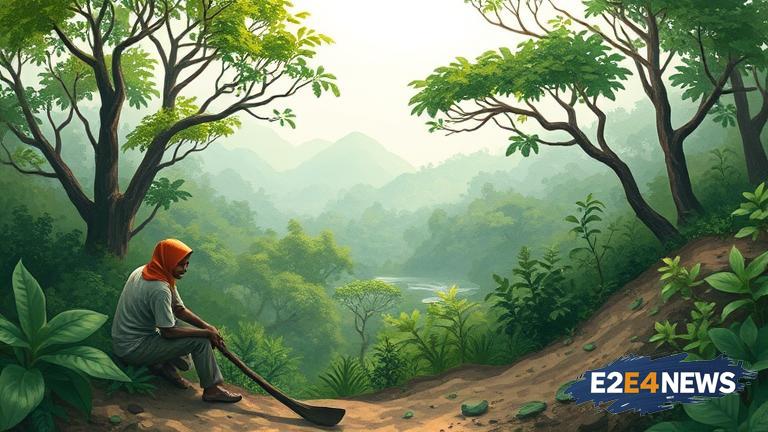India, a country with a rich cultural heritage and diverse geography, is facing numerous environmental challenges that threaten its very survival. The country’s rapid industrialization and urbanization have led to widespread deforestation, pollution, and climate change, putting its natural resources and biodiversity at risk. However, amidst these challenges, there are many communities across the country that are taking the lead in conservation efforts, protecting the environment and promoting sustainable development. These communities, often referred to as the ‘guardians of the green’, are working tirelessly to preserve India’s natural heritage, from the majestic Himalayas to the lush Western Ghats. Through their efforts, they are not only protecting the environment but also promoting eco-tourism, sustainable agriculture, and community-led development. In the state of Uttarakhand, for example, local communities are working to conserve the fragile Himalayan ecosystem, protecting endangered species such as the snow leopard and the Himalayan monal. Similarly, in the state of Kerala, communities are preserving the Western Ghats, one of the most biodiverse regions in the world, by promoting sustainable agriculture and eco-tourism. These community-led conservation efforts are not only beneficial for the environment but also provide economic benefits to local communities, creating jobs and promoting sustainable livelihoods. Furthermore, they also help to preserve India’s cultural heritage, promoting traditional practices and customs that are closely tied to the natural environment. The Indian government has also recognized the importance of community-led conservation, launching initiatives such as the ‘Green India Mission’ to promote sustainable development and environmental protection. However, despite these efforts, there are still many challenges that need to be addressed, including the lack of funding, infrastructure, and support for community-led conservation initiatives. Additionally, the impact of climate change, pollution, and deforestation continues to pose a significant threat to India’s environment and biodiversity. To address these challenges, it is essential that the government, civil society, and local communities work together to promote sustainable development and environmental protection. This can be achieved through the implementation of policies and programs that support community-led conservation, provide funding and resources for conservation efforts, and promote sustainable practices and technologies. Moreover, it is also essential to raise awareness about the importance of environmental protection and conservation, promoting education and outreach programs that inspire individuals to take action. In conclusion, India’s green guardians, the communities that are leading the fight for conservation and sustainability, are a shining example of the power of community-led action. Their efforts demonstrate that even in the face of significant challenges, it is possible to make a positive impact and promote sustainable development. As India continues to grow and develop, it is essential that the country prioritizes environmental protection and conservation, supporting community-led initiatives and promoting sustainable practices and technologies. By doing so, India can ensure a sustainable future for generations to come, protecting its natural heritage and promoting economic growth and development. The country’s biodiversity, from the majestic elephants to the tiny microorganisms, is a precious resource that needs to be protected and preserved. The conservation of India’s natural resources is not only essential for the environment but also for the country’s economic development, as it provides numerous benefits, including eco-tourism, sustainable agriculture, and community-led development. Furthermore, the preservation of India’s cultural heritage is also closely tied to the conservation of its natural environment, as many traditional practices and customs are closely linked to the natural world. In order to promote sustainable development and environmental protection, it is essential that the government, civil society, and local communities work together, supporting community-led conservation initiatives and promoting sustainable practices and technologies. The Indian government has launched several initiatives to promote sustainable development and environmental protection, including the ‘Green India Mission’ and the ‘Swachh Bharat Abhiyan’. However, despite these efforts, there is still much work to be done to address the significant environmental challenges facing the country. The impact of climate change, pollution, and deforestation continues to pose a significant threat to India’s environment and biodiversity, and it is essential that the country takes urgent action to address these challenges. In addition to government initiatives, it is also essential that civil society and local communities play a key role in promoting sustainable development and environmental protection. This can be achieved through the implementation of community-led conservation initiatives, the promotion of sustainable practices and technologies, and the raising of awareness about the importance of environmental protection and conservation. By working together, India can ensure a sustainable future for generations to come, protecting its natural heritage and promoting economic growth and development.
